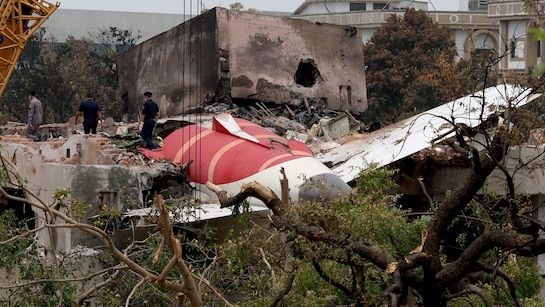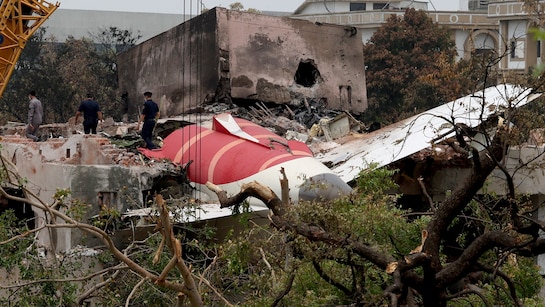AAIB’s preliminary report reveals mysterious mid-air engine shutdown on Air India B787-8 flight. Pilots deny initiating the fuel cutoff.
Unexpected Engine Cutoff Leaves Investigators Searching for Answers
In a concerning development for India’s aviation sector, the Aircraft Accident Investigation Bureau (AAIB) has released its preliminary findings on the Air India B787-8 incident, which saw both engines of the aircraft shut down mid-air under unexplained circumstances. While no injuries were reported, the nature of the accident has raised serious questions around cockpit systems, automation, and human error.
According to the report, the aircraft—operating a scheduled flight on Boeing 787-8 Dreamliner—achieved its maximum recorded airspeed of 180 knots indicated airspeed (IAS) at precisely 08:08:42 UTC. Within just seconds, a highly unusual and dangerous event occurred: both Engine 1 and Engine 2 fuel cutoff switches were transitioned from RUN to CUTOFF, essentially cutting off fuel to both engines, one after the other, with a time gap of just 1 second.
The consequence? A near-total loss of engine power at a critical stage of flight.
Cockpit Voice Recording Adds to the Mystery
While aviation incidents are often traced back to mechanical faults, pilot error, or weather disturbances, this case has taken a bizarre turn due to what was heard on the cockpit voice recorder (CVR). In the recording, one pilot is heard asking the other: “Why did you cutoff?”—implying a manual shutdown of the engines.
But the real twist? The other pilot responded he did not perform the cutoff.
This exchange has cast a shadow of uncertainty over the cause, pointing either to a potential technical glitch, a cockpit system error, or an unknown anomaly. There is no clear indication yet whether the shutdown was caused by crew input, accidental trigger, or a malfunction.
What Happens When Both Engines Shut Down?
A dual engine cutoff, particularly in the early stages of flight, is one of the most serious emergencies in aviation. Although modern aircraft like the Boeing 787 are designed with multiple redundancies, a complete loss of engine thrust during climb or cruise can lead to rapid altitude loss, instability, and potential disaster if not corrected swiftly.
Fortunately, in this case, the crew was able to regain control and safety was maintained. But the situation was dangerously close to a catastrophic scenario—and the lack of clear pilot action raises deep concerns for investigators.
Technical Context: What Is a Fuel Cutoff Switch?
Every commercial jet has fuel cutoff switches—essentially engine master controls that determine whether fuel is being supplied to the engines. These switches are manually operated during start-up and shutdown procedures.
The fact that both cutoff switches were activated within one second of each other is highly irregular. In normal conditions, there’s no reason for either pilot to cut fuel supply to both engines in mid-flight unless dealing with a fire or another critical engine anomaly—none of which has been reported in this case.
AAIB: No Recommendations Yet, But Investigation Ongoing
At this stage, the AAIB has refrained from issuing any formal safety recommendations for other Boeing 787-8 or GE GEnx-1B engine operators. Their position is understandable—the report is still preliminary, and many facts remain unclear.
The investigating team is now in the process of:
Reviewing aircraft systems and flight data recorder (FDR)
Collecting additional maintenance records
Examining recent software or avionics updates
Interviewing crew members and technical personnel
Consulting with Boeing and GE for any previous incidents of similar nature
Sources indicate that external tampering or cyber-related anomalies are not being ruled out, though no evidence of such interference has been found as yet.
Aviation Community on Alert
Globally, the aviation community has taken note of this incident. While rare, unexplained dual-engine shutdowns fall under critical incident categories by international standards. The fact that no mechanical failure or fire warning preceded the cutoff, and that neither pilot claims responsibility, has alarmed aviation safety boards.
Several Indian carriers operating Boeing 787s have already begun internal checks to ensure their fuel cutoff systems are free from potential automation errors or wiring faults. Some experts suggest this could lead to temporary technical directives or software patches, depending on what future investigation uncovers.
Not the First Time Air India Has Faced Technical Scrutiny
While Air India has one of the largest and most modern fleets in India, it has faced repeated criticism in the past for technical delays, maintenance lapses, and internal disorganization—issues the Tata Group has actively worked to fix after its takeover.
Still, this incident is a reminder that safety oversight must remain aggressive. In an industry where even one mistake can cost hundreds of lives, accident prevention must be proactive, not reactive.
Public Trust and Transparency
As India pushes to become a global aviation hub and Air India plans to expand into new international markets, incidents like this can shake public confidence. Even if this turns out to be an isolated glitch, the lack of pilot awareness during a life-threatening event raises critical questions about training, cockpit communication, and human-machine interface inside modern jets.
The Indian public, already growing more conscious of air safety post-COVID, will be watching this investigation closely. Air India has not yet issued a detailed public statement, but sources say it is cooperating fully with the AAIB and Boeing technical teams.
Final Thoughts
The preliminary report on the Air India B787-8 dual engine cutoff has opened more questions than answers. While the crew managed to avert disaster, the silence in the cockpit and the mystery of the fuel cutoffs demand a thorough and transparent investigation.
Until then, the aviation community, passengers, and regulators can only hope that this was a rare anomaly—and not a sign of deeper vulnerabilities in one of the most widely used wide-body aircraft in the skies today.


